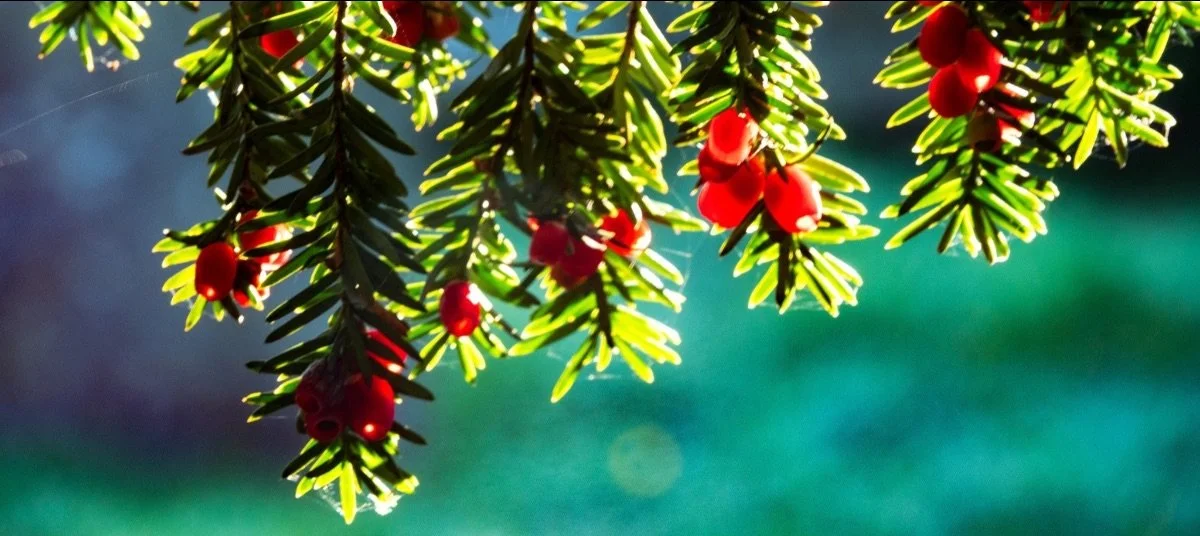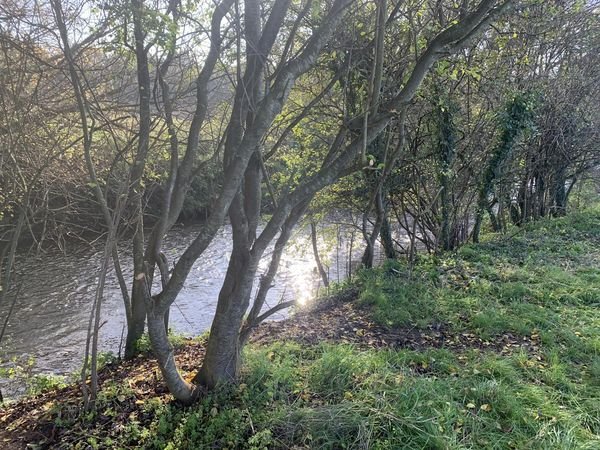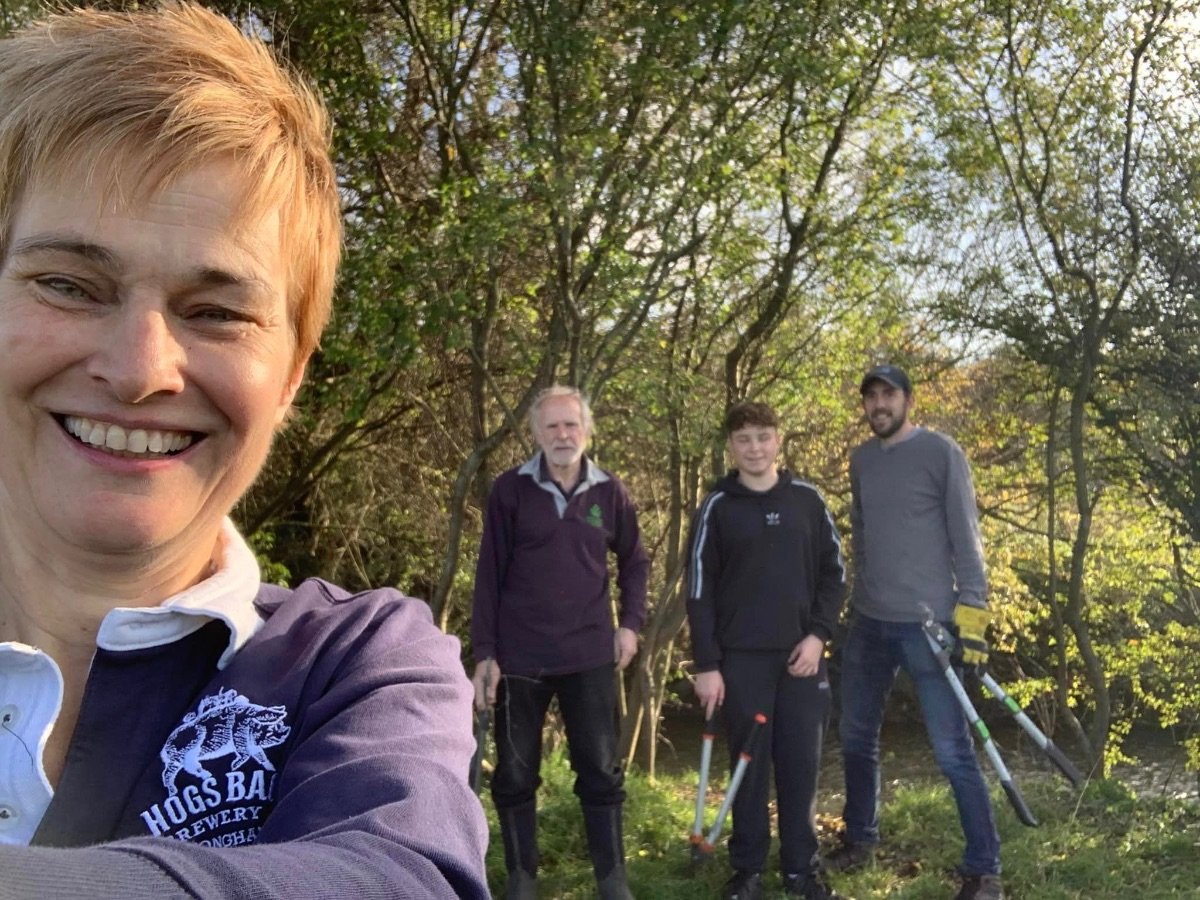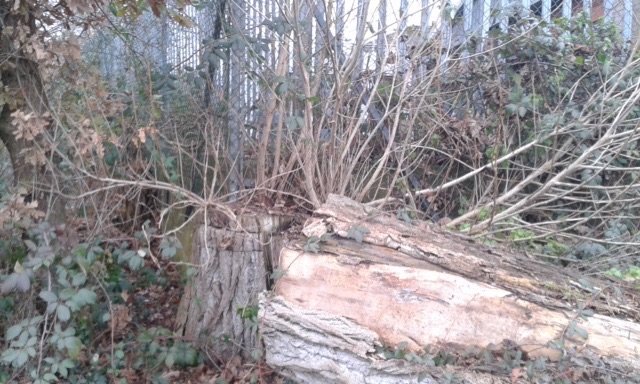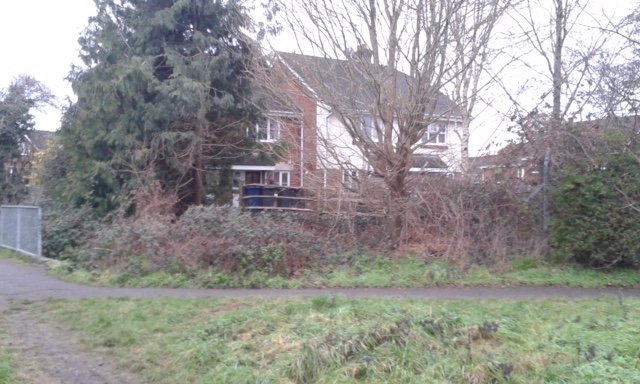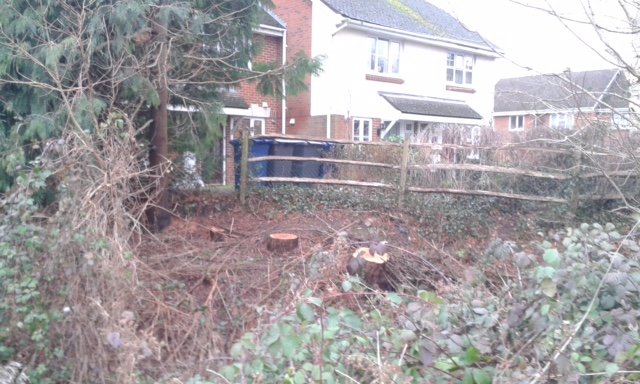Season’s Greetings from the Bishop's Meadow Trust and welcome to the latest edition of the Bishop's Meadow Newsletter!
There has been lots of work going on since the AGM in September. Much of the work that is undertaken is making sure that the land is managed responsibly and we wanted to share what’s been going on behind the scenes to help maintain this piece of much-loved land. There is also a new article to our ‘curious about life on the meadows’ series, focusing on hoverflies - giving a real insight into varieties as well as how to distinguish them from wasps or bees.
We hope you enjoy the update, thank you to all those volunteers who have helped over recent months and we wish you all the best for the new year ahead.
Image courtesy of Jonathan Durham ARPS
River care
After a recommendation from the Environment Agency work started to cut back growth on the rivers edge and to get some more light into sections of the river which is beneficial to the fish and other wildlife.
Huge thanks to Megan and others who joined Nick to carry out the work. Trimming back the lower branches of a sprawling cherry tree and hawthorns along with pruning back some climbing roses. This is going to be continued into the Spring as well.
The view into the river cleared of brambles. Photos courtesy of Megan Eisenbraun
The bank of the Mill brook beside the bridge to Weydon Mill Lane was crumbling into the brook. We believe this was mainly due to dogs going in at this section of the river and again after a suggestion from the Environment Agency a short length of stock fencing was erected to prevent this continuing. There is a far better and safer area just past the end of this short new fence for dogs to go in.
The work of widening the stream that borders both the northeast side of the meadows and the wellbeing garden space2grow seems to have paid off as no flooding of this garden has happened since this work was completed.
Keeping the footpaths clear & clearing fences
Lots of work has been carried out over the last few weeks/months to make sure that the public pathways in the meadows remain accessible.
Along the north side of the meadows the Blackthorn was cut back to try to keep the public and permitted footpaths as easy and safe to use as possible. Many people access the meadows coming over the West Street cemetery wall and passing through the arching Blackthorn, so the area was cleaned up and the cut material left to become a habit for wildlife.
The growth of brambles, like so much in this past year, has been prodigious, growing over and on to the tarmac footpath beside the Tudor ditch and so over several days this was cut back and down and the nettles further along had the same treatment. This is an ever-present job that is carried out quite regularly during the season.
Mindful of how muddy the footpath going towards the weir becomes in the wet months, the width of the path was enlarged, cutting back mainly nettles in that area. This makes the path a little easier to navigate especially during the wet months.
The post and rail fence that starts at the beginning of the entrance to the meadows from St. Andrews churchyard and that borders Sir Ray Tindle’s part of the meadows were rotten and falling down. With permission those parts of the fence that had fallen down were removed with help of volunteers. It has yet to be decided what will happen to the remaining parts of the fence and gates.
Curious about the meadows?...
Our continued series by Mick Frank on different environmental elements on the meadows continues. Below is a piece on hoverflies with spectacular photography - the full article can be found on the website. There are now 6 different topics and all the articles can be found HERE. We hope you enjoy!
HOVERFLIES, a gee-whiz guide!
Hoverflies are not a terribly prominent part of Bishop Meadow’s insect fauna but they are probably more significant than one might think...
Like many insects, most of a hoverfly’s life is conducted unseen as larvae making a living by various means. Hoverfly adults are invariably pollen / nectar / honey dew feeders and therefore qualify as important pollinators. If you haven’t got a profusion of flowers, you won’t see a profusion of flower feeders hence the situation on Bishops Meadow. In anticipation of an increase in botanical diversity in the meadow and in recognition that hoverflies are colourful, charismatic flies that frequent flower-rich gardens, I thought an illustrated introduction to is worthwhile.
To read on click HERE
To see all the articles please click here
The bramble balance: clearing & maintaining
Brambles seem to pop up everywhere and so an effort was made to cut them down in the meadow grass where they were spreading. Large clumps were reduced that spread into the grass, fortunately there are many other large areas which can remain untouched and are available for the wildlife in the protected areas that dogs and people can’t access.
Hedges, trees & new growth
We are hoping that the hedging whips and small trees that were planted in the late spring when the ground was still very wet are going to survive. The underlying clay that should hold a water bank really dried out this summer so it will be seen whether they managed to survive the hot summer and got enough water. Once the spring weather is with us again we will be able to assess this.
Where the poplars were removed along the fence of the now departed and empty British Car Actions car park, the regrowth of the poplars is well under way and fortunately many are mainly coming back as smaller multi-stemmed trees. This work has enhanced the growth of the once idling hawthorns, roses and planted hornbeams. The biannual tree survey was completed in December and reports that there are no trees that need any work or removal at present.
The willow that got pollarded in the Spring beside the tarmac diagonal public footpath (opposite the cracked willow which was bought down due to safety concerns) has shown enormous regrowth.
It's amazing to watch nature at work and bounce back!
After the limb of a Leylandii fell across the public footpath earlier in the year and then the whole tree was removed, the management company that manage the Crosby Way estate decided to take down a further three trees giving much more light to the houses at the far end of Crosby Way.
Finally, the Trust invested in a new ride-on grass cutting machine. The current one was not designed for work on uneven ground and maintenance costs were rising. The old machine was sold and replaced with a more suitable, rugged machine which, although larger, can still past through the pedestrian gates.
Image courtesy of D Gosnell
If you would like to volunteer in the Spring and help with some of the ongoing maintenance work please get in touch by emailing info@bishopsmeadowtrust.com - We would love for you to join us.
And if you would like to make a donation towards the Meadows and support the work that we do, you can do so HERE
The more we raise from our members donations the safer the future of the Meadows is.
We hope that you have a very Merry Christmas and wish you a happy 2023!
Yours,
Nick Green - Chair

